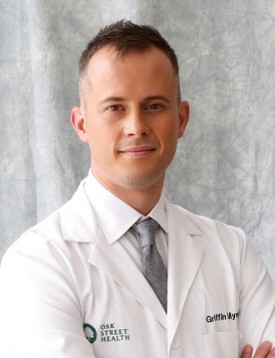Full Risk Value-Based Care Key to Treating Vulnerable Patients
Oak Street Health uses value-based care contracts with full financial risk to invest in the capabilities needed to improve the health of the most vulnerable patient populations.

Source: Thinkstock
- Oak Street Health, a 24-primary care network headquartered in Chicago, aims to rebuild healthcare as it should be using value-based care contracts with full financial risk. The health system’s mission is to deliver personal, equitable, and accountable healthcare.
However, the traditional fee-for-service payment structure does not support that vision of healthcare for the 33,000 Medicare, Medicaid, and dual eligible patients being treated at Oak Street Health clinics, the system’s Co-Founder and Chief Medical Officer Griffin Myers, MD, recently explained to RevCycleIntelligence.com.

“This is a population that has not traditionally thrived in a fee-for-service environment,” he said. “Frankly, the healthcare system is not really built to take care of them.”
Medicare, Medicaid, and dual eligible populations represent the most vulnerable individuals in the healthcare system. Two-thirds of Medicare beneficiaries suffer from three or more chronic conditions and over one-quarter reported being in fair or poor health.
Medicaid beneficiaries do not fare any better. Not only does the program cover economically disadvantaged individuals, but one in ten adult Medicaid beneficiaries has a diabetes diagnosis and even more have cardiovascular (28 percent) and respiratory disease (23 percent). Over one-third have also manage a diagnosed mental illness.
READ MORE: Good Data, Better Value-Based Care Can Boost Population Health
Medicare and Medicaid beneficiaries may face serious health and care access issues. But individuals who qualify for both coverage options tend to experience even worse outcomes. Dual eligible patients generated risk scores 50 percent higher than the average scores for Medicare beneficiaries and the population had an average of six chronic conditions. The group also reported higher rates of hospitalizations and readmissions for chronic conditions.
The fee-for-service payment environment fails these vulnerable patient populations because the system encourages more care, rather than better care, Dr. Myers stated.
But value-based care contracts with full financial risk arrangements counter the fee-for-service care model and allow providers like those employed by Oak Street Health to improve the health of their Medicare, Medicaid, and dual eligible patients.
“Oak Street enters into full risk contracts, which means we are fully accountable for the cost and quality of all of the care delivered to a patient, whether it’s in our practice or not,” Dr. Myers said. “That creates a powerful incentive for us to invest upfront in doing what matters and what’s valuable to patients. If we do that and keep people happy, healthy, and out of the hospital, then not only do our patients thrive with better health outcomes at lower cost, but that lower cost is reflected in savings, which Oak Street can accrue and then invest back into the care model.”
Full financial risk contracts allow Oak Street Health to share in savings and invest in the three capabilities needed to improve the value of care for vulnerable patient populations. The capabilities are access, personalized medicine, and a structured, connected care model.
READ MORE: Exploring Two-Sided Financial Risk in Alternative Payment Models
Dr. Myers explained that practices need to first break down care access barriers and devise ways to get their patients to the doctor in order to be successful in value-based care with full financial risk.
“It means that the average Medicare beneficiary needs to see their primary care doctor more than three times. The average is three,” he said. “At Oak Street, our average is closer to nine and, for our sickest five percent of people, it is 19 times.”
To promote care access, the health system provides transportation to and from their clinics for patients who do not have access to that resource. Patients can also reach a clinician 24/7 by phone.
The additional care access resources address social determinants of health, which accounted for about one-third of all patient deaths in 2011.
“You don’t have to get very far into providing care to vulnerable populations with chronic disease before you understand it’s not always their medical conditions in isolation,” Dr. Myers elaborated. “There are challenges that our patients face with access to care, and frankly, with just getting to the clinic, having the ability to afford their medications, access to a healthy diet and safe housing, and things that.”
READ MORE: The Future of Accountable Care Organizations Involves Risk
Offering services that directly help patients access care, like transportation and 24/7 phone lines, help. But Oak Street Health also promotes community and patient engagement events to draw patients to the clinics.
“Every one of our clinics has a community center up front that is staffed, has daily programming, and includes a small self-service café with green tea and decaf coffee because we have about an 85 percent prevalence of hypertension in our population,” he said. “For daily programming, we have everything from educational events, like specialists coming and giving talks on breast cancer screening, to fun events like bingo.”
Oak Street Health will host over 15,000 community events this year to invite patients to their community centers. The events will also place clinicians and other center staff in the community to share how primary care improves health outcomes.
Community and patient engagement activities resulted in fewer no-shows and far more office visits.
Once clinics improve care access, providers should create personalized care plans to lower costs and improve quality under value-based care contracts with full financial risk.
“Practices need to create an evidence-based experience that’s customized to the needs of that patient,” Dr. Myers stated. “There are folks who are 65 years old who are retired bankers and triathletes. They need less. That being said, there are people with multiple chronic conditions who need far more support.”
“We at Oak Street do not believe in one size fits all,” he continued. “Part of that is being able to create a customized experience based on that individual patient and be able to do that at scale.”
Additionally, Dr. Myers pointed to Oak Street Health’s structured, connected care model as the key to high-value care in risk-based arrangements.
“You need the ability to know where every patient is on their journey in the healthcare system and there’s some technology that needs to help inform that. But just as much as technology, there needs to be training, tools, and processes and culture in place, so care teams can be fully accountable for those patients,” he said.
Providers should be invested in improving the outcomes for their patients and practices need to foster that goal by implementing a structured care model that allows providers to track their patients throughout the healthcare system, he continued.
Oak Street Health enables their providers to monitor their patients throughout their healthcare journey through a data system known as the Canopy tool. Dr. Myers explained that the tool sits on top of the health system’s multiple data sources.
“All of the different data sources that are going to help us provide a personal, equitable and accountable experience with that patient on that phone call doesn’t come from claims data, doesn’t come from a call service, doesn’t come from a care management program. It comes from all of those things,” he elaborated.
“Being able to put those all together in one dashboard across Oak Street so that we are all organized and, as I said before, can execute on the one size doesn’t fit all care model that we’ve designed,” he added. “A canopy had to be built from the ground up to be able to do that. It’s the tool that we use to bring all of the complexities together in one simple place.”
Using the three capabilities for value-based contracts with full financial risk, Oak Street Health is overcoming the fee-for-service challenge. Providers are no longer calling it a day after patients leave the office as they did under fee-for-service.
Instead, providers are invested in how their patients are doing when they are not in the office because risk-based value-based care contracts depend on it.
While it may be scary for providers to have their treatment put to the test and have revenue at risk under risk-based contracts, the health system has noticed their patients going to the hospital 40 percent less and coming into their offices more.
Building on that success, Oak Street Health plans to continue down the risk-based, value-based pathway to make an impact on the health of the most vulnerable patient populations.
